By OCC Staff
The arts is an expanding field that has undergone many significant changes over the past 25 years. What was once seemingly archaic has taken on new life as mediums have expanded from stone, paint or wood to include virtual and even light-based. More than just studying “the Masters” of the Renaissance, the field of Visual Arts includes a foray into modern technology and a broad variety of techniques for artists to hone their crafts. Throughout modern times, art has been used to mirror culture, introduce new ideas and communicate in alternative ways. Christian Colleges and Universities serve the public well by including Visual Arts programs, as artists can influence culture. What higher call is there than to shape a culture toward ultimate Truth and show the character of a transcendent God through artistry? It with this mindset that we present the Top Ten Visual Arts Programs.
The methodology for this ranking begins with our pool of schools that are members of the Council for Christian Colleges & Universities (CCCU) or qualify to be considered member eligible. We then collected data from publicly available sources for the following six categories, 1)Number of Visual Arts Degree Program, 2) Faculty-to-student ratio, 3) Percent of full-time beginning undergraduates receiving a grant or scholarship aid, 4) Selectivity, 5) Overall retention rate and 6) Overall graduation rate. We assigned a greater weight to the number of degree programs and then equal weights to all other categories.
10. Calvin University
Grand Rapids, Michigan
School Website
Calvin University is a private, Christian liberal arts institution located in Grand Rapids, Michigan. Established in 1876, Calvin College is named for the well-known Protestant Reformer, John Calvin, and operates under the historic motto of, “My heart I offer you, Lord, promptly and sincerely.” Today, the College’s mission is to equip students “to think deeply, act justly, and to live wholeheartedly as Christ’s agents of renewal in the world.” Affiliated with the Christian Reformed Church of North America (CRCNA) as well as the Council of Christian Colleges and Universities (CCCU), Dr. Michael K. Le Roy serves as the university’s president. Calvin has a total enrollment figure of nearly 4,000, the vast majority of whom are undergraduate students, with an average student to faculty ratio of 13 to 1.
Calvin University is accredited by the North Central Association of Colleges and Schools and has been so since 1930. The university offers a variety of academic programs through its several departments which encompass a broad range of areas. In the field of visual arts, Calvin College offers a Bachelor of Fine Arts and majors in Graphic Design, Studio Art, and Art Education K-12. Available through the Department of Art and Art History, Calvin College’s art facilities include studios for painting, printmaking, sculpture, ceramics, architectural design and drawing, photography labs as well as a woodworking shop. State-of-the-art facilities for graphic design/visual communications students include two Mac classrooms and a fully-staffed Teaching and Learning Digital Studio inside of the university’s Hekman Library. With the goal of “engaging the visual arts to serve society,” Calvin’s Art department is staffed by faculty members who are experts in their fields. They have published books and essays, actively curate exhibitions and exhibit their art in local, national and international venues, and who make teaching “their top priority.”
| Programs | |||
| Bachelor of Fine Arts | Graphic Design major | Studio Art major | Art Education K-12 major |
9. Azusa Pacific University
Azusa, California
School Website
![]() Azusa Pacific University (commonly abbreviated APU) is a private, evangelical Christian institution of higher education, located in Azusa, California, a suburb of Los Angeles. Thoroughly established in the Wesleyan-Holiness tradition, APU boasts a total enrollment figure of nearly 10,000, including approximately 6,000 undergraduates, with an average student to faculty ratio is 11 to 1. Founded in 1899 by a small group of Quakers and a Methodist Evangelist in Whittier, APU was California’s first Bible college and was formerly called the Training School for Christian Workers. Today, however, all ties to the Quaker denomination have been dissolved as APU holds a more evangelistic theology and is not associated with any particular denomination. After merging with three other Evangelical colleges in Southern California, APU moved to its current location in 1949.
Azusa Pacific University (commonly abbreviated APU) is a private, evangelical Christian institution of higher education, located in Azusa, California, a suburb of Los Angeles. Thoroughly established in the Wesleyan-Holiness tradition, APU boasts a total enrollment figure of nearly 10,000, including approximately 6,000 undergraduates, with an average student to faculty ratio is 11 to 1. Founded in 1899 by a small group of Quakers and a Methodist Evangelist in Whittier, APU was California’s first Bible college and was formerly called the Training School for Christian Workers. Today, however, all ties to the Quaker denomination have been dissolved as APU holds a more evangelistic theology and is not associated with any particular denomination. After merging with three other Evangelical colleges in Southern California, APU moved to its current location in 1949.
Azusa Pacific University offers a variety of undergraduate, graduate, and special programs through its several colleges and schools. These include the Leung School of Accounting, the School of Behavioral and Applied Sciences, the School of Business and Management, the School of Education, APU’s Honors College, the College of Liberal Arts and Sciences, the College of Music and Arts, APU’s Nursing School, Azusa Pacific Seminary, the School of Theology, and the University College (formerly the Azusa Pacific Online University and School of Adult and Professional Studies). APU offers five visual art degrees, including the Bachelor of Art in both Art and Graphic Design, the Bachelor of Fine Arts in Visual Art, the Master of Fine Arts in Visual Art, and the Master of Art in Art History. All programs offered through APU’s Department of Art and Design are accredited by the National Association of Schools of Art and Design (NASAD) as well as by the WASC Senior College and University Commission (WSCUC).
| Programs | ||||
| Art, BA | Graphic Design, BA | Visual Arts, BFA | Visual Art, MFA | Art History, MA |
8. Mississippi College
Clinton, Mississippi
School Website
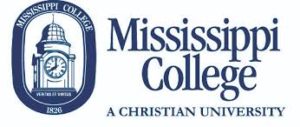 Mississippi College is a private, coeducational, comprehensive Christian institution of the liberal arts and sciences and professional studies located in Clinton, Mississippi. The second-oldest Baptist-affiliated college in the country as well as the oldest college in the state of Mississippi, Mississippi College was established in 1826. Soon after in 1831 Mississippi College became fully coeducational and began granting degrees to women. Today, Mississippi College’s vision is “to be known as a university recognized for academic excellence and commitment to the cause of Christ.” The College is accredited by the Southern Association of Colleges and Schools and has been so since 1922. More than 5,000 students are currently enrolled, including approximately 3,000 undergraduate students, and the College has an average student to faculty ratio of 15 to 1.
Mississippi College is a private, coeducational, comprehensive Christian institution of the liberal arts and sciences and professional studies located in Clinton, Mississippi. The second-oldest Baptist-affiliated college in the country as well as the oldest college in the state of Mississippi, Mississippi College was established in 1826. Soon after in 1831 Mississippi College became fully coeducational and began granting degrees to women. Today, Mississippi College’s vision is “to be known as a university recognized for academic excellence and commitment to the cause of Christ.” The College is accredited by the Southern Association of Colleges and Schools and has been so since 1922. More than 5,000 students are currently enrolled, including approximately 3,000 undergraduate students, and the College has an average student to faculty ratio of 15 to 1.
Mississippi College offers a wide variety of undergraduate and graduate degree programs through its seven schools, each of which house even more Departments. This includes the School of Business, the School of Christian Studies & the Arts, the School of Education, the School of Humanities & Social Sciences, the School of Law, the School of Nursing, and the School of Science & Mathematics. In the area of Visual Arts, Mississippi College offers a Bachelor of Fine Arts in Studio Art, with concentrations in Painting, Sculpture, and Ceramics; a Bachelor of Science in both Studio Art and Art Education; and a Bachelor of Arts/Bachelor of Science in Graphic Design and in Interior Design. At the graduate level, the College offers a Master of Fine Arts in Visual Arts, with concentrations in 2-D and 3-D; a Master of Fine Arts in Graphic Design; a Master of Science in Art; and a Master of Education in Art.
| Programs | ||||||||
| Studio Art, BFA | Studio Art, BS | Graphic Design, BA/BS | Interior Design, BA/BS | Art Education, BS | Visual Arts, MFA | Graphic Design, MFA | Art, MS | Art, MEd |
7. College of the Ozarks
Point Lookout, Missouri
School Website
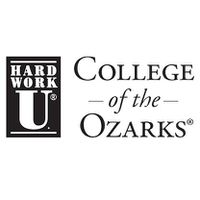 Located on a 1,000-acre campus in Point Lookout, Missouri, the College of the Ozarks (commonly referred to as C of O) is a private, Christian liberal arts institution. Founded in 1907, C of O distinguishes itself from other colleges in that students work to earn their keep rather than pay tuition. Through the unique combination of state grants, scholarships and the school’s on-campus work program students are charged a total of $0 in tuition costs; as a result, C of O has earned the nicknamed “Hard Work U.” The College places a strong emphasis on “character” education and is committed to providing students with a quality Christian education. C of O’s mission is “to provide the advantages of a Christian education for youth of both sexes, especially those found worthy, but who are without sufficient means to procure such training.”
Located on a 1,000-acre campus in Point Lookout, Missouri, the College of the Ozarks (commonly referred to as C of O) is a private, Christian liberal arts institution. Founded in 1907, C of O distinguishes itself from other colleges in that students work to earn their keep rather than pay tuition. Through the unique combination of state grants, scholarships and the school’s on-campus work program students are charged a total of $0 in tuition costs; as a result, C of O has earned the nicknamed “Hard Work U.” The College places a strong emphasis on “character” education and is committed to providing students with a quality Christian education. C of O’s mission is “to provide the advantages of a Christian education for youth of both sexes, especially those found worthy, but who are without sufficient means to procure such training.”
In addition to the real-world work experience, the school’s tuition program provides, the College of the Ozarks offers a variety of academic programs with more than 25 majors, 36 minors, and several pre-professional programs. Academic programs include three visual arts majors, with a Bachelor of Art/Bachelor of Science in Studio Art and in Art Education and a Graphic Arts major. Offered through the College’s Art department, the department’s mission is to “develop professional artists who are individuals of excellent character.” The department’s faculty strives to challenge and nurture students to achieve their personal best, believing that “art isn’t something one does, but rather being a complete artist affects the way in which we experience the world around us.” C of O’s Studio Arts degree is available with emphasis in graphic design, ceramics, computer art, fibers and painting while the Art Education program includes certification to teach grades K through 12 in the states of Missouri and Arkansas.
| Programs | ||
| Studio Art, BA/BS | Art Education, BA/BS | Graphic Art major |
6. Taylor University
Upland, Indiana
School Website
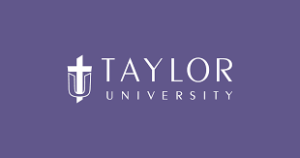 Taylor University is a private, co-educational, Christian liberal arts institution located in Upland, Indiana. Established in 1846, the University was named after William Taylor, an American Missionary Bishop of the Methodist Episcopal Church who traveled all over the world to evangelize. Situated on a 952-acre campus, the University is located just five miles east of I-69, 50 miles south of Fort Wayne, IN, and 70 miles north of Indianapolis. A non-denominational institution, Taylor University’s mission is to “develop servant leaders marked with a passion to minister Christ’s redemptive love and truth to a world in need.” For the past nine years, Taylor University has been ranked as the #1 Regional College- Midwest by U.S. News & World Report. The University’s total enrollment includes more than 2,000 students, the vast majority of whom are undergraduates, with an average student to faculty ratio of 12 to 1. Student satisfaction with Taylor University ranks high with approximately 90% of alumni indicating that they would attend Taylor again, according to a 20014 survey.
Taylor University is a private, co-educational, Christian liberal arts institution located in Upland, Indiana. Established in 1846, the University was named after William Taylor, an American Missionary Bishop of the Methodist Episcopal Church who traveled all over the world to evangelize. Situated on a 952-acre campus, the University is located just five miles east of I-69, 50 miles south of Fort Wayne, IN, and 70 miles north of Indianapolis. A non-denominational institution, Taylor University’s mission is to “develop servant leaders marked with a passion to minister Christ’s redemptive love and truth to a world in need.” For the past nine years, Taylor University has been ranked as the #1 Regional College- Midwest by U.S. News & World Report. The University’s total enrollment includes more than 2,000 students, the vast majority of whom are undergraduates, with an average student to faculty ratio of 12 to 1. Student satisfaction with Taylor University ranks high with approximately 90% of alumni indicating that they would attend Taylor again, according to a 20014 survey.
Taylor University is accredited by the North Central Association of Colleges and Schools and has been so since 1947. More than 100 degree programs are offered by Taylor University, including five Visual Arts majors, namely Art Education, Film & Media Production, Graphic Art (with concentrations available in Design, Illustration, and Photography), Pre-Art Therapy and Studio Art. Offered through the University’s Art Department, the department’s mission is to build students’ artistic skill and to strengthen their understanding “of the significance of art and the role it can play in the world beyond studio and classroom.” Taylor University is home to the Modelle Metcalf Visual Arts Center, which features 38,000 square feet with classrooms and workspaces, two art galleries and a lecture space.
| Programs | ||||
| Art Education Major | Film & Media Production Major | Graphic Art Major | Pre-Art Therapy Major | Studio Art Major |
5. Messiah College
Mechanicsburg, Pennsylvania
School Website
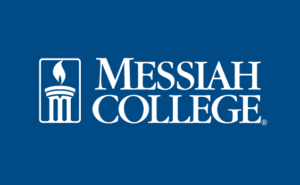 Messiah College is a private Christian college of the liberal arts and applied arts and sciences, located about eight miles outside of Harrisburg in Mechanicsburg, Pennsylvania. Established in 1909 by the Brethren in Christ Church, the College was originally known as the Messiah Bible School and Missionary Training Home. In 1921 the school evolved into a junior college and by 1951 developed its initial four-year college program and was renamed Messiah College. Today Messiah College is a non-denominational institution, though still influenced by its historical affiliation with the Brethren in Christ Church. Messiah College’s mission is to “educate men and women toward maturity of intellect, character and Christian faith in preparation for lives of service, leadership, and reconciliation in church and society.” The College has a total enrollment figure of more than 3,300 students, including over 2,800 undergraduates, with an average student to faculty ratio of 12 to 1.
Messiah College is a private Christian college of the liberal arts and applied arts and sciences, located about eight miles outside of Harrisburg in Mechanicsburg, Pennsylvania. Established in 1909 by the Brethren in Christ Church, the College was originally known as the Messiah Bible School and Missionary Training Home. In 1921 the school evolved into a junior college and by 1951 developed its initial four-year college program and was renamed Messiah College. Today Messiah College is a non-denominational institution, though still influenced by its historical affiliation with the Brethren in Christ Church. Messiah College’s mission is to “educate men and women toward maturity of intellect, character and Christian faith in preparation for lives of service, leadership, and reconciliation in church and society.” The College has a total enrollment figure of more than 3,300 students, including over 2,800 undergraduates, with an average student to faculty ratio of 12 to 1.
Messiah College holds its accreditation through the Middle States Commission on Higher Education which granted its initial accreditation back in 1963. More than 80 majors and pre-professional programs are available at Messiah College in addition to nearly two dozen graduate-level programs. The College is comprised of four schools, each of which houses multiple departments, including the School of Arts which houses the departments of Music, Theatre and Dance, and Visual Arts. Through this latter department Messiah College offers the Bachelor of Arts degree with majors in Art, Art History, Digital Media (with concentrations in Art & Design and in Digital Video & Story), and Film & Media Arts; the Bachelor of Science in Art Education, with emphasis in 3-D Studies and 2-D Studies; and a Bachelor of Fine Arts/Bachelor of Arts in Studio Art with an emphasis in Graphic Design & Digital Art.
| Programs | |||||
| Art, BA | Art History, BA | Digital Media, BA | Film & Media Arts, BA | Art Education, BS | Studio Art, BFA/BA |
4. Wheaton College
Mechanicsburg, Pennsylvania
School Website
 Wheaton College is a private, non-profit, coeducational, Christian liberal arts institution located in Wheaton, Illinois. Founded in 1860, the College was established in the evangelical Protestant tradition and is well known for its strong Christian heritage and robust academic results. Wheaton College is the alma mater of several notable Christian figures including missionary and martyr, Jim Elliot, evangelist Billy Graham, and pastor, John Piper. Wheaton College has a total enrollment figure of nearly 3,000, including approximately 2,500 undergraduates, with an average student to faculty ratio of 11 to 1. Among these students, fully 7% of them come from either missionary or third culture backgrounds and 20% of students represent ethnic minority groups. Wheaton College’s mission is to serve “Jesus Christ and [advance] His Kingdom through excellence in liberal arts and graduate programs that educate the whole person to build the church and benefit society worldwide.” The institution’s motto expresses its commitment to “do all things ‘For Christ and His Kingdom.’”
Wheaton College is a private, non-profit, coeducational, Christian liberal arts institution located in Wheaton, Illinois. Founded in 1860, the College was established in the evangelical Protestant tradition and is well known for its strong Christian heritage and robust academic results. Wheaton College is the alma mater of several notable Christian figures including missionary and martyr, Jim Elliot, evangelist Billy Graham, and pastor, John Piper. Wheaton College has a total enrollment figure of nearly 3,000, including approximately 2,500 undergraduates, with an average student to faculty ratio of 11 to 1. Among these students, fully 7% of them come from either missionary or third culture backgrounds and 20% of students represent ethnic minority groups. Wheaton College’s mission is to serve “Jesus Christ and [advance] His Kingdom through excellence in liberal arts and graduate programs that educate the whole person to build the church and benefit society worldwide.” The institution’s motto expresses its commitment to “do all things ‘For Christ and His Kingdom.’”
Wheaton College is accredited by the North Central Association of Colleges and Schools and has been so since the mid 19-teens. More than 40 undergraduate majors are offered through the College’s Department of Arts & Sciences, the Conservatory of Music, and the Department of Global & Experiential Learning. The College offers three visual arts degrees through its Art Department, including a Bachelor of Science in Studio Art, Art History, and Community Art & Missions. Committed to the development of the whole person, the department’s mission is to nurture “creativity and artistic expressions as gifts from God to the individual, the church, and society at large.” The Art Department further encourages students to create art that is “culturally relevant,” to seek out “beauty and significance” and to celebrate individual uniqueness while participating in community.
| Programs | ||
| BA Studio Art | BA Art History | BA Community Art & Missions |
3. Whitworth University
Spokane, Washington
School Website
 Whitworth University, located in Spokane, Washington, is a private, residential Christian liberal arts institution. Established in 1883 by George F. Whitworth as the Sumner Academy, the University was originally located in the small town of Sumner in the (then) Washington Territory and affiliated with the Presbyterian Church. In 1890 the school became incorporated as Whitworth College, having been renamed in honor of its founder. In 1899 the college relocated to Tacoma and again in 1914 moved again, this time to its current location in Spokane. Today, the mission of Whitworth University is to “provide its diverse student body an education of mind and heart, equipping its graduates to honor God, follow Christ, and serve humanity.” Whitworth University has a total enrollment figure of more than 2,600, including over 2,300 undergraduate students, with an average student to faculty ratio of 11 to 1.
Whitworth University, located in Spokane, Washington, is a private, residential Christian liberal arts institution. Established in 1883 by George F. Whitworth as the Sumner Academy, the University was originally located in the small town of Sumner in the (then) Washington Territory and affiliated with the Presbyterian Church. In 1890 the school became incorporated as Whitworth College, having been renamed in honor of its founder. In 1899 the college relocated to Tacoma and again in 1914 moved again, this time to its current location in Spokane. Today, the mission of Whitworth University is to “provide its diverse student body an education of mind and heart, equipping its graduates to honor God, follow Christ, and serve humanity.” Whitworth University has a total enrollment figure of more than 2,600, including over 2,300 undergraduate students, with an average student to faculty ratio of 11 to 1.
Whitworth University is accredited by the Northwest Commission on Colleges and Universities and has been so since 1933. Whitworth University is characterized not only by the academic excellence it offers but also the way in which it purposefully integrates both faith and learning. A variety of undergraduate and graduate degrees and programs are offered through the University’s several schools and colleges, including the College of Arts & Sciences, the School of Business, the School of Education, and the School of Continuing Studies. In the area of visual arts, Whitworth University offers five-degree programs: a Bachelor of Art (BA) in Art with concentrations in Ceramics, Drawing, Graphic Design, Mixed Media, Painting, Printmaking, and Sculpture; a BA in Art Administration; Art Education; Art History; and in Graphic Design. Available through the Department of Art, the department “strives to develop in its students an awareness and appreciation of God’s world.”
| Programs | ||||
| Art, BA | Art Administration, BA | Art Education, BA | Art History, BA | Graphic Design, BA |
2. Lipscomb University
Nashville, Tennessee
School Website
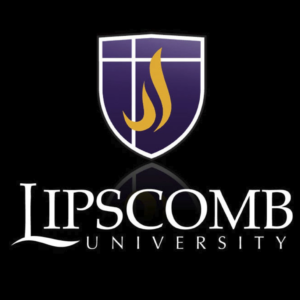 Lipscomb University is a private, coeducational, Christian, liberal arts institution located in Nashville, Tennessee. Founded in 1891 by David Lipscomb and James A. Harding, the University began as the Nashville Bible School but later changed its name to honor David Lipscomb who donated his estate to serve as the school’s campus. Lipscomb University is the alma mater of several prominent ministers in the Church of Christ movement, and to this day the university remains thoroughly affiliated with the Churches of Christ. The mission of Lipscomb University is to “integrate Christian Faith and practice with academic excellence. This mission is carried out not only in the classroom but also by involvement in numerous services to the church and larger community.” The University is accredited by the Southern Association of Colleges and Schools and has been so since 1954.
Lipscomb University is a private, coeducational, Christian, liberal arts institution located in Nashville, Tennessee. Founded in 1891 by David Lipscomb and James A. Harding, the University began as the Nashville Bible School but later changed its name to honor David Lipscomb who donated his estate to serve as the school’s campus. Lipscomb University is the alma mater of several prominent ministers in the Church of Christ movement, and to this day the university remains thoroughly affiliated with the Churches of Christ. The mission of Lipscomb University is to “integrate Christian Faith and practice with academic excellence. This mission is carried out not only in the classroom but also by involvement in numerous services to the church and larger community.” The University is accredited by the Southern Association of Colleges and Schools and has been so since 1954.
Lipscomb University offers a wide variety of undergraduate and graduate degree programs including nearly a dozen visual arts programs. These include the Bachelor of Arts with majors in Visual Arts Administration, Visual Arts Teaching, Art Therapy, Art (with an emphasis in either Graphic Design or Studio); a Bachelor of Arts or Bachelor of Science in Fashion Merchandising (with emphasis in Corporate or Entrepreneurial) and in Fashion Design; the Bachelor of Fine Arts in Film Production, Studio Art, Graphic Design and Entertainment Design (with an emphasis in Theatre); and a Bachelor of Arts or Bachelor of Fine Arts in Animation. The University boasts a total enrollment figure of more than 4,000 students, including nearly 3,000 undergraduates. More than 30 religious preferences are represented in Lipscomb University’s student body, as are almost all 50 states and 45 foreign nations. The University is staffed by more than 300 faculty members with an average student to faculty ratio of 12 to 1.
| Programs | ||||||||||
| Art Therapy, BA | Art, BA | Visual Arts Administration, BA | Visual Arts Teaching, BA | Fashion Merchandising, BA/B | ||||||
| Fashion Design, BA/BS | Animation, BA/BFA | Film Production, BFA | Entertainment Design, BFA | Studio Art, BFA | ||||||
| Graphic Design, BFA | ||||||||||
1. Union University
Jackson, Tennessee
School Website
 Union University is a private, evangelical Christian, liberal arts institution located in Jackson, Tennessee. Founded in 1823 shortly after the western portion of the state opened for settlement, the University began as the Jackson Male Academy. In 1925 the institution, by then had adopted its current name, became formally affiliated with the Tennessee Baptist Convention. Union University’s mission is to provide students with a “Christ-centered education that promotes excellence and character development in service to Church and Society.” The University is accredited by the Southern Association of Colleges and Schools and has been so since 1948.
Union University is a private, evangelical Christian, liberal arts institution located in Jackson, Tennessee. Founded in 1823 shortly after the western portion of the state opened for settlement, the University began as the Jackson Male Academy. In 1925 the institution, by then had adopted its current name, became formally affiliated with the Tennessee Baptist Convention. Union University’s mission is to provide students with a “Christ-centered education that promotes excellence and character development in service to Church and Society.” The University is accredited by the Southern Association of Colleges and Schools and has been so since 1948.
Union University has a total enrollment figure of more than 3,500, including more than 2,500 undergraduates, with an average student to faculty ratio of 10 to 1. The University is comprised of several colleges and schools, including the College of Arts and Sciences. More than 100 programs of study are offered at both the undergraduate and graduate levels, including ten visual art majors. Specific programs include Art, Ceramics, Drawing, Graphic Design, Painting, Photography, Pre-Professional Art Therapy, Sculpture, Studio Art and Visual Aesthetics. Taught from a Christian perspective, Union University seeks to help art students “grapple with the issues of contemporary art, the church, and society” and to inspire them to “think deeper and create greater.” Accredited by the National Association of Schools of Art and Design, Union University is actively involved in Christian in the Visual Arts (CIVA) and boasts facilities including a state-of-the-art computer lab and a large, student-built, oriental wood fire kiln.
| Programs | |||||||||
| Art | Ceramics | Drawing | Graphic Design | Painting | |||||
| Photography | Pre-Professional Art Therapy | Sculpture | Studio Art | Visual Aesthetics | |||||
Related Resources:
